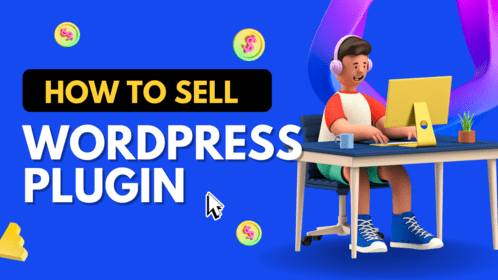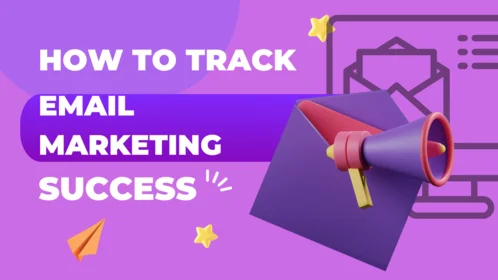Email Marketing is still a potent tool for companies to engage with their target market. It helps to forge connections and produce significant outcomes in the digital era. But with inboxes overrun with many messages, designing a successful email marketing strategy is harder than ever. Understanding the tactics and best practices that provide a campaign with real effect is essential. This is to break through the clutter and grab recipients’ attention.
This article offers a thorough how-to for developing successful email marketing campaigns that deliver quantifiable outcomes. These insights and advice will give you the skills and information to improve your campaigns. Also, you will be able to reach your marketing objectives, whether you’re an experienced marketer or just getting started.
Definition and Importance of Email Marketing Campaigns
Email marketing campaigns are focused, individualized emails delivered to a list of people intending to promote goods, and services or foster connections. It entails producing and sending engaging material right to subscribers’ inboxes, enabling businesses to interact with customers more personally and directly.
The success of email marketing efforts in increasing engagement, building consumer loyalty, and producing conversions is what makes them so significant. In contrast to other kinds of digital marketing, email marketing offers a personalized and one-on-one communication channel, enabling companies to send customized messages to particular target segments. It allows companies to grow their subscriber base, establish trust, and maintain top-of-mind awareness.
Email marketing efforts also offer a high return on investment (ROI) and are cost-effective. Compared to conventional marketing channels, firms may achieve considerable benefits thanks to the capacity to reach many subscribers cheaply. Additionally, email marketing campaigns provide useful analytics and insights that enable marketers to monitor and assess the success of their initiatives and come to data-driven conclusions for ongoing development.
Email marketing efforts are crucial for companies trying to interact with their customers, encourage and automate sales, and create enduring connections. It is a potent instrument in the contemporary marketing scene because it offers a direct channel of connection that is affordable and measurable.
Understanding Your Target Audience
The cornerstone of developing successful email marketing campaigns is understanding your target demographic. You may craft your communications to connect with people more deeply by learning about their preferences, needs, and behaviors.
Conducting market research and gathering demographic data, including age, gender, geography, and income, are essential steps in understanding your target market. In addition, psychographic information on a person’s interests, pastimes, values, and pain spots can provide important details about their motivations and goals. By segmenting your audience according to these factors, you may design more individualized email campaigns that are more pertinent to your audience’s interests and requirements.
Additionally, developing customer personas helps improve your comprehension of your target market. A buyer persona is a fictitious depiction of your ideal client, including details about their preferences, ambitions, obstacles, and purchase patterns. You may sympathize with your audience, comprehend their motives, and create messages relevant to their situations by creating thorough personas. Your ability to develop email marketing campaigns with more impact and personalization that successfully engage and convert your target audience is made possible by this deeper information.
Setting Clear Campaign Goals
Your email marketing efforts must be successful by having defined campaign objectives. It becomes difficult to gauge your progress, track accomplishments, and make wise decisions for optimization without well-defined targets.

In developing campaign goals, SMART is crucial (specific, measurable, achievable, relevant, and time-bound). For instance, your objectives can be to build your subscriber base, increase email open rates, or increase sales by a specific percentage. These objectives should support your business objectives and be consistent with your marketing strategy.
Setting specific goals will keep you on track and ensure your email marketing campaigns have a purpose. You may use it to choose the key performance indicators (KPIs) you should monitor and measure to evaluate your efforts’ effectiveness. You can track progress, make data-driven choices, and constantly improve your efforts to achieve greater outcomes when you have well-defined targets.
Building a Quality Email List
Building a quality email list is one of the most important components of successful email marketing campaigns. Engaged and interested subscribers make up a high-quality email list since they are likelier to open your emails, interact with your content, and become paying customers.
Permission-based marketing should be your main priority if you want to develop a high-quality email list. This entails getting people’s permission before adding them to your email list. By using opt-in techniques like sign-up forms on your website, gated content, or double opt-in procedures, you can ensure that your subscribers are interested in receiving your messages and are ready to offer their email addresses.
Additionally, using lead-creation strategies might help you increase the number of engaged and pertinent subscribers on your email list. This category falls under the category of offering worthwhile rewards like exclusive material, savings, or cost-free resources in return for email hosting sign-ups. Social media platforms, webinars, events, and collaborations may all be used to increase your audience and draw in new customers. Maintaining the quality of your email list over time requires regular monitoring and management, which includes deleting inactive or uninterested members.
Crafting Engaging Email Content
Prioritize creating eye-catching subject lines for your emails in order to get recipients to open them. To catch their attention, use succinct, enticing language, apply personalization strategies, and consider introducing urgency or curiosity.
Create email templates that are mobile-friendly and visually attractive next. Use a professional, streamlined layout that complements the aesthetics of your company. Use captivating graphics, such as pertinent photographs or films, to increase engagement and effectively communicate your message.
Send personalized emails to subscribers by addressing them by name and segmenting your email list according to their preferences, actions, or demographics. Your emails will feel more relevant and important to the receiver due to this individualized approach, which also helps establish a relationship.
Create interesting email content by employing persuasive copywriting strategies. Instead of only focusing on the attributes of your products or services, emphasize the advantages they provide. Use persuasive arguments, compelling stories, and unambiguous calls to action (CTAs) to persuade readers to take the desired action.
Optimizing Email Deliverability
In order for your emails to be delivered and not marked as spam, it is essential to optimize their deliverability. Following are some essential techniques to improve email deliverability:
First, follow standard practices for email deliverability. Using an email service provider (ESP) with a solid sender reputation and adherence to industry norms is one way to do this. Observe rules like keeping your bounce rate low, adding a clear unsubscribe link, and avoiding misleading material or deceptive subject lines.
Following email marketing rules is critical to prevent being flagged as spam. Ensure you receive correct authorization from subscribers by being familiar with rules like the CAN-SPAM Act and the General Data Protection Regulation (GDPR). Give recipients a simple mechanism to opt-out and swiftly process unsubscribe requests.
Keep your email list updated and clean by deleting any incorrect or inactive email addresses. High bounce rates might damage the reputation of your sender. Therefore keeping a strong list is crucial. Target your messages and concentrate on active subscribers by segmenting your email list depending on subscriber engagement levels.
Ensuring Compliance and Data Privacy
To safeguard the information of your subscribers and uphold confidence, email marketing must ensure compliance and data privacy. The following are crucial actions to put compliance and data privacy first:
Learn about pertinent data protection laws, such as the General Data Protection Regulation (GDPR) or the California Consumer Privacy Act (CCPA), depending on the location of your target audience. Recognize the conditions and responsibilities set out by these laws, such as getting the right permission, presenting clear privacy policies, and providing opt-out alternatives.
Before adding subscribers to your email list, get their express permission. Implement a transparent opt-in process so that people voluntarily submit their email addresses. Make sure they are informed about how their data will be handled. Give them alternatives so they may quickly manage their preferences and unsubscribe if they so desire.
Make sure the right security procedures are in place to protect subscriber data. To guard against data breaches and illegal access, use industry-standard encryption techniques, keep secure servers, and update your software often. Use trustworthy email service providers (ESPs) with strict privacy policies and a focus on data protection.
Nurturing Customer Relationships
Successful email marketing strategies must focus on maintaining client relationships. You can develop long-lasting connections by regularly engaging with your subscribers and adding content. This will help you to increase trust and brand loyalty. The following are crucial tactics for fostering client relationships through email marketing:
Prioritize, first and foremost, providing your subscribers with pertinent and worthwhile material. Recognize their requirements, problems, and interests, then make sure your email content directly addresses those. Give them access to enlightening materials, practical advice, exclusive deals, or tailored suggestions that fit their tastes. By continuously providing worthwhile content, you build a reputation as an authority. This keeps your business at the forefront of consumers’ minds.
Use consumer behavior, preferences, or lifecycle stages to segment your email list. This allows you to send emails specifically tailored to and appealing to particular audience segments. Customize your messaging for a more individualized experience depending on their prior purchases, interaction history, or demographics. You may increase engagement and show that you are aware of and care about each segment’s particular demands. This is by providing material pertinent to and targeted to each group.
Conclusion
In conclusion, we would like to summarize the components of a successful email marketing campaign:
- Thorough comprehension of the target market
- Precise objectives
- Compelling content
- Enhanced deliverability
- Dedication to compliance
- Strong customer connections
Businesses can unleash the potential of email marketing to connect, engage, and produce significant results by putting these techniques into practice.



